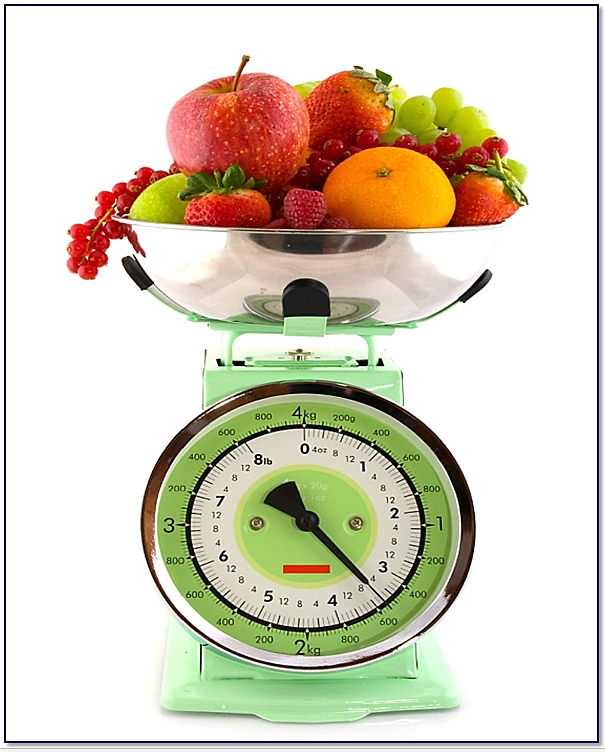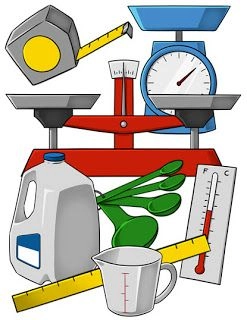Gram to kilogram—understanding this conversion is a fundamental skill in the world of measurements. Switching between units essential in various fields, from science and engineering to everyday tasks like cooking and shopping.
It’s not just an interesting concept but also incredibly practical. Whether you’re conducting scientific experiments or simply measuring ingredients, knowing how to convert grams to kilograms is a valuable tool.
In this blog, we’ll explore grams, kilograms, and the simple steps to convert between them effortlessly.
- How Important is the Conversion between Grams and Kilograms?
- Conclusion
- FAQs
- 1) Why is understanding the conversion from grams to kilograms necessary?
- 2) What is the basic concept behind converting grams to kilograms?
- 3) Can you provide a real-life example of converting grams to kilograms using the methods discussed in the article?
- 4) How might scientific notation be applied in the conversion process?
- 5) What interesting historical fact about grams and kilograms is mentioned in the article?
How Important is the Conversion between Grams and Kilograms?

Grams and kilograms are the two primary mass units within the metric system, the internationally recognized standard for measurement, also known as the International System of Units (SI).
Grams are used for smaller objects, such as spices, medications, and jewelry, while kilograms are employed for larger items like fruits, vegetables, and household appliances.
Converting between these units, also known as metric units of mass, is essential for accurate measurement, ensuring consistency and precision in various applications. Additionally, the kilogram is defined as the mass equivalent to one liter of water, making it a crucial unit of measurement in the SI system.
Gram to Kilogram conversion plays a crucial role in scientific experiments and research.
Chemists meticulously weigh ingredients in grams to ensure precise chemical reactions, while biologists measure the mass of organisms in grams to study their growth and development.
Similarly, engineers rely on kilogram measurements to design structures and test the strength of materials.
1. What is a Gram?
A gram (originally gram; SI unit symbol g) is a metric unit used to measure the mass or weight of something. Grams are most commonly used to measure small or light objects and ingredients in cooking and baking.
A gram is defined as a thousandth of a kilogram (¹/₁₀₀₀ kilogram).
1 gram = kilograms
1 kilogram = 1000 grams
2. Common uses of a gram
Food: Grams are often used to measure recipe ingredients, such as spices, herbs, and baking.
For example, a recipe might call for 1 gram of ground cinnamon or 250 grams of all-purpose flour.
Medicine: Grams are used to measure the dosage of medications, such as over-the-counter pain relievers and prescription drugs.
For example, a bottle of ibuprofen tablets might have a label saying, "Each tablet contains 200 mg (milligrams) of ibuprofen."
Science: Grams are used to measure the mass of scientific samples, such as chemicals and biological specimens.
For example, a scientist might measure the mass of a soil sample to determine its density.
3. What is a Kilogram?
A kilogram (kg) is the base unit of mass in the metric system. A kilogram equals 1000 grams. A kilogram is equal to 2.2 pounds.
Kilograms are typically used to express the weight of heavier objects. 1 kilogram = 1000 grams and 1 gram = 0.001 kilograms People use the kilogram a lot, and it's one of the common ways to measure weight, along with units like grams (g) and metric tons.
On the other hand, in the U.S. customary and imperial systems, weight is measured using pounds (lb), ounces (oz), and tons (t). Kilograms and other measurements of mass:
1 kg = 1,000 g
1 metric ton = 1,000 kg
1 kg = 2.205 lb
1 kg = 35.274 oz
907.184 kg = 1 ton
4. Common uses of Kilogram:
Food: Kilograms are often used to measure bulk quantities of food, such as flour, sugar, and rice.
For example, a bag of flour might weigh 5 kilograms.

Body weight: Kilograms are used to measure the weight of people, animals, and objects.
For example, an adult human might weigh around 70 kilograms.
Shopping: Kilograms are used to measure the weight of goods sold by weight, such as fruits, vegetables, and meat.
For example, a customer might purchase 2 kilograms of apples.
Shipping: Kilograms are used to measure the weight of packages and shipments.
For example, a shipping company might charge a fee based on the weight of a package in kilograms.
5. How do you convert grams to kilograms?
The metric system is based on powers of 10, making conversions straightforward.
The Gram (g) and kilogram (kg) are both units of mass, with 1 kilogram equal to 1000 grams. To convert grams to kilograms, divide the number of grams by 1000.
Methods of Conversion
Direct Division:
The most straightforward method is to divide the number of grams by 1000.
For example, to convert 2500 grams to kilograms, you would divide 2500 by 1000, resulting in 2.5 kilograms.
Using Decimals:
Another method is to express the weight in grams as a decimal.
For instance, 3500 grams would be 3.5 kilograms (3500 grams ÷ 1000 = 3.5 kg).
Scientific Notation:
Scientific notation can be used for larger numbers.
If you have 5000 grams, you can express it as 5 x 10^3 grams, and by dividing 5 by 1000, you get 5 kilograms.
6. The Conversion Process
Converting between grams and kilograms is straightforward since they are metric units. All you need to remember is:
1 kilogram = 1000 grams and 1 gram = 0.001 kilograms So, to convert, you need to move the decimal point 3 places left or right, depending on which direction you are converting.
Converting Grams to Kilograms: 1) Let's say you want to convert 500 grams to kilograms 2) Move the decimal point 3 places to the left since 1 kg = 1000 g 3) 500 grams equals 0.5 kg.
Converting Kilograms to Grams: 1) Let's convert 2.5 kg to grams 2) Move the decimal 3 places to the right because 1 g = 0.001 kg 3) 2.5 kg equals 2500 grams
See how easy it is! No memorization of conversion factors or formulas is required.
METRIC CONVERSIONS | |||||
1 gram | = | 1000 milligrams | 1g | = | 1000 mg |
1 kilogram | = | 1000 grams | 1 kg | = | 1000 g |
1 tonne (1 megagram) | = | 1000 kilograms | 1 ton | = | 1000 kg |
1 gram | = | 0.035274 ounces | 1 g | = | 0.035274 oz |
1 kilogram | = | 2.20462 pounds | 1 kg | = | 2.20462 lb |
1 kilogram | = | 35.27396 ounces | 1 kg | = | 35.27396 oz |
1 ton | = | 1.10231 ton | 1 ton | = | 1.10231 ton |
1 ounce | = | 28.34952 grams | 1 oz | = | 28.34952 g |
1 pound | = | 453.59237 grams | 1 lb | = | 453.59237 g |
1 pound | = | 0.45359 kilograms | 1 lb | = | 0.45359 kg |
1 hundredweight | = | 50.8023 kilograms | 1 cwt | = | 50.8023 kg |
1 ton, short | = | 0.90718 tons | 1 ton | = | 0.90718 tons |
7. Real-World Examples and Uses Beyond
scientific applications, Gram-to-kilogram conversion is indispensable in everyday life. Cooks measure ingredients in grams to create delectable dishes, while shoppers weigh fruits and vegetables in kilograms to ensure they purchase the desired quantity.
Additionally, athletes and health-conscious individuals track their food intake in grams to monitor their calorie consumption.
Converting between grams and kilograms is useful whenever you need to communicate the mass of something, compare products and containers based on weight, or follow recipe ingredient amounts.
A protein powder container holds 2 kg of powder. How many grams does it hold? Kilograms =

2 kg x 1000 g/kg = 2000 grams
A bread recipe calls for 550 g of flour. How many
Kilograms is this? Kilograms =

550 g x (1 kg/1000 g) = 0.55 kg
You are comparing two brands of rice. One bag holds 5 kg while the other holds 5000 g. Which holds more rice?Kilograms =

The bags contain the same amount (5 kg = 5000 g)
Convert 2500 grams to kilograms. Kilograms =

Kilograms= 2500

1000g 1000g Kilograms=2.5kg
Convert 12500 grams to kilograms. Kilograms =

Kilograms = 12500

1000g 1000g Kilograms = 12.5kg
8. Interesting Facts

The metric system, introduced in France in the late 1700s, proposed a mass unit called the grave, later replaced by the gram.
The gram was defined as the absolute mass of 1 cubic centimeter of water at 4 degrees Celsius.
A kilogram, a thousand times more massive than a gram, became the practical standard, forged from platinum as the "kilogram of the archives."
The kilogram of the archives served as the mass standard in France for almost a hundred years.
In the 1800s, global economic growth led to problems with measuring mass, as each country had incompatible standards.
The Treaty of the Meter in 1875 established the kilogram as the international unit of mass, embodied in the International Prototype Kilogram (IPK).
The IPK, made of platinum (90 percent) and iridium (10 percent), was distributed to signatory countries, including the United States.
The U.S. received copies of the IPK (K4 and K20) in 1890, serving as official national kilogram standards.



Conclusion
The ability to convert between grams and kilograms is not merely a matter of academic interest; it is a practical skill with far-reaching implications.
From the precision of scientific research to the everyday tasks of cooking and shopping, Gram-Kilogram conversion remains an essential tool in our lives. Understanding the relationship between grams and kilograms and how to convert between them allows you to compare, calculate, and communicate mass measurements more effectively.
So, the next time you encounter grams, remember that converting to kilograms is as simple as dividing by 1000 to arrive at the number of kilograms in this system of
FAQs
1) Why is understanding the conversion from grams to kilograms necessary?
Understanding the conversion from grams to kilograms is essential for practical applications in various fields. It simplifies measurements in the metric system, making it easier for tasks like cooking, scientific experiments, and everyday calculations.
2) What is the basic concept behind converting grams to kilograms?
The basic concept is rooted in the metric system's structure, where 1 kilogram equals 1000 grams. To convert grams to kilograms, divide the weight in grams by 1000.
3) Can you provide a real-life example of converting grams to kilograms using the methods discussed in the article?
If you have a bag of rice weighing 1800 grams, you can convert it to kilograms by dividing 1800 by 1000, resulting in 1.8 kilograms.
4) How might scientific notation be applied in the conversion process?
Scientific notation is useful for larger numbers. For instance, if you have 4500 grams, you can express it as 4.5 x 10^3 grams and then divide by 1000 to get 4.5 kilograms.
5) What interesting historical fact about grams and kilograms is mentioned in the article?
The metric system, including grams and kilograms, originated in the French Revolution and was officially adopted as the international measurement standard in 1875. This historical context adds significance to using grams and kilograms in today's measurements.


Comments